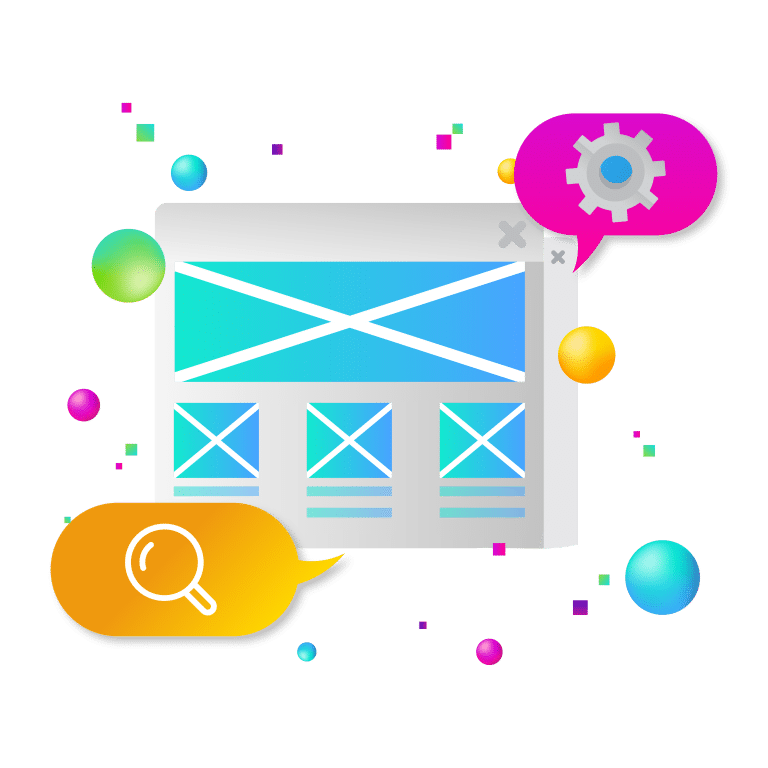Digital companies have adopted the “content-first” attitude to help their clients’ websites run more efficiently and, as a result, provide a better user experience (UX).

A content-first strategy considers content as the most important component of a website (message, copy, graphics, video, downloadables, and so on). While function and design are crucial aspects of a website, content is the reason users visit it in the first place. As a result, content must be established as the basic beginning point for the planning, design, and development of a user-centric website.
Why Form Follows Content
Humans are primarily visual beings. Instead of conceptualizing and utilizing our imaginations, seeing things with our own eyes helps us understand them. It’s a lovely, pleasant picture to see what your website could look like before you’ve written any actual content, but it’s putting the metaphorical wagon before the horse.
Designing a website before defining a company’s important content is a mistake that can throw off any strategy and cost money.
A website that prioritizes design will also fall short in terms of providing a positive user experience. Content should be simple to find and interesting to read. If you have to pack content into a design, you’ll almost certainly have to sacrifice essential UX principles to make it all fit.
DifferenceS Between Design and Content
Content is the tangible material that users cognitively consume. Content can be words, pictures, video, and audio. On the other hand, design is how that content is presented and influences people’s feelings at the moment. It is imperative that content has a front-row spot in the design process.
Why You Need a Content Strategy
A robust content strategy that outlines how you’ll address the needs of your target audience while also achieving your marketing objectives is an essential component of your website.
Your website’s content is its magnet, and a content strategy will direct your strategies for who (target audience), what (topics), and where (website architecture) to create it. It also aids in the creation of a content hierarchy and the understanding of what content is most vital to least important for each page on your website. A content strategy for your website should be defined at the start of your website redesign project before any design or development work begins.
Investigating the Brand
The goal and beliefs of our clients provide a rich source of content that most designers only scratch the surface of. Many ideas for content and insights can be found here, but it requires taking a step back from the website process to examine the brand. This can be intimidating, but it is often necessary to understand the project’s basic goals.
Through methods like stakeholder interviews, we are able to encourage our clients to think about themselves as a brand and their customers to create a content strategy that influences the designs we create.
When we know a website’s goals, we can see what kind of content is required to achieve those goals. We encourage reviewing the existing content to determine if anything is missing, confusing, or outdated and work from there.
Content Is the Foundation of Design
Organizing content will help you decide what should go on each page and will make developing a sitemap much easier. Working with a well-defined sitemap can help your team avoid wasting time and money on ineffective designs. When starting with essential content and a sitemap, your team will be able to understand how the various types of content fit together and how people will interact with and navigate the website.
A content-first strategy allows designers and writers to collaborate. Any limitations or requirements in either area can and will affect the work for both roles. When content creators and designers share a single purpose and understand how all the components fit together, they are able to create a better final product.
Design around the Content
The goal of a website’s design is to represent the brand, provide content in a meaningful way, and create an engaging visual environment. Designers have traditionally been pushed to come up with creative ways to display content that doesn’t exist yet, or that may alter dramatically once the website is built. As a result, if the designer had a better knowledge of the page’s content early in the process, the design would have likely looked significantly different. Modern website design requires form to follow function and design to follow content, rather than the other way around.
New Target Focuses on Content From the Start
We understand it’s tempting to start with design and worry about the content later. But content is and always should be a priority. Creating a content strategy focused on our client’s unique goals is the first step, but creating client-centered, relevant completing content is also required. The content on your website needs to provide your audience with the information and answers they seek at each stage of their journey.
While design and development are obviously crucial to the success of your website design or redesign, we work with our clients on content from the start. With our content-first approach to website design, we can better serve our clients and their users’ needs and build a website that promotes a positive user experience, allowing them to experience better engagement and more conversions. Contact us today!



